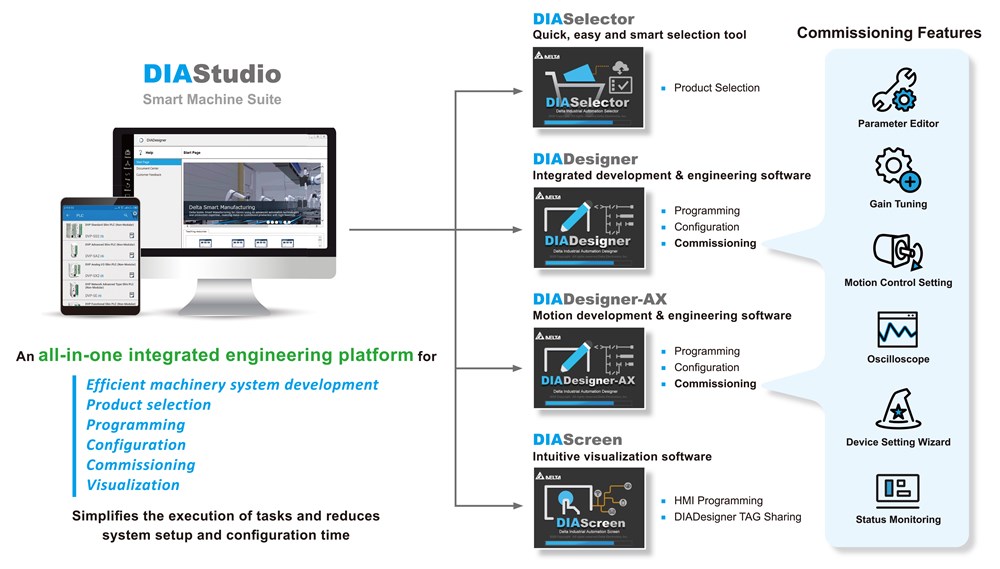1. EXECUTIVE SUMMARY
- CVSS v4 8.4
- ATTENTION: Low attack complexity
- Vendor: Delta Electronics
- Equipment: DIAScreen
- Vulnerabilities: Stack-based Buffer Overflow
2. RISK EVALUATION
Successful exploitation of this these vulnerabilities could crash the device being accessed; a buffer overflow condition may allow remote code execution.
3. TECHNICAL DETAILS
3.1 AFFECTED PRODUCTS
The following versions of DIAScreen, which is a component of Delta’s DIAStudio Smart Machine Suite integrated engineering software package, are affected:
- DIAScreen: versions prior to v1.5.0
3.2 Vulnerability Overview
3.2.1 Stack-based Buffer Overflow CWE-121
If an attacker tricks a valid user into running Delta Electronics DIAScreen with a file containing malicious code, a stack-based buffer overflow in BACnetObjectInfo can be exploited, allowing the attacker to remotely execute arbitrary code.
CVE-2024-47131 has been assigned to this vulnerability. A CVSS v3.1 base score of 7.5 has been calculated; the CVSS vector string is (CVSS:3.1/AV:L/AC:L/PR:N/UI:R/S:U/C:H/I:H/A:H).
A CVSS v4 score has also been calculated for CVE-2024-47131. A base score of 8.4 has been calculated; the CVSS vector string is (CVSS:4.0/AV:L/AC:L/AT:N/PR:N/UI:A/VC:H/VI:H/VA:H/SC:N/SI:N/SA:N).
3.2.2 Stack-based Buffer Overflow CWE-121
If an attacker tricks a valid user into running Delta Electronics DIAScreen with a file containing malicious code, a stack-based buffer overflow in BACnetParameter can be exploited, allowing the attacker to remotely execute arbitrary code.
CVE-2024-39605 has been assigned to this vulnerability. A CVSS v3.1 base score of 7.5 has been calculated; the CVSS vector string is (CVSS:3.1/AV:L/AC:L/PR:N/UI:R/S:U/C:H/I:H/A:H).
A CVSS v4 score has also been calculated for CVE-2024-39605. A base score of 8.4 has been calculated; the CVSS vector string is (CVSS:4.0/AV:L/AC:L/AT:N/PR:N/UI:A/VC:H/VI:H/VA:H/SC:N/SI:N/SA:N).
3.2.3 Stack-based Buffer Overflow CWE-121
If an attacker tricks a valid user into running Delta Electronics DIAScreen with a file containing malicious code, a stack-based buffer overflow in CEtherIPTagItem can be exploited, allowing the attacker to remotely execute arbitrary code.
CVE-2024-39354 has been assigned to this vulnerability. A CVSS v3.1 base score of 7.5 has been calculated; the CVSS vector string is (CVSS:3.1/AV:L/AC:L/PR:N/UI:R/S:U/C:H/I:H/A:H).
A CVSS v4 score has also been calculated for CVE-2024-39354. A base score of 8.4 has been calculated; the CVSS vector string is (CVSS:4.0/AV:L/AC:L/AT:N/PR:N/UI:A/VC:H/VI:H/VA:H/SC:N/SI:N/SA:N).
3.3 BACKGROUND
- CRITICAL INFRASTRUCTURE SECTORS: Energy
- COUNTRIES/AREAS DEPLOYED: Worldwide
- COMPANY HEADQUARTERS LOCATION: Taiwan
3.4 RESEARCHER
Natnael Samson working with Trend Micro Zero Day Initiative reported these vulnerabilities to CISA.
4. MITIGATIONS
Delta Electronics has released v1.5.0 of DIAScreen (login required) and recommends users install this update on all affected systems.
For more information, please see the Delta product cybersecurity advisory for these issues.
CISA recommends users take the following measures to protect themselves from social engineering attacks:
- Do not click web links or open attachments in unsolicited email messages.
- Refer to Recognizing and Avoiding Email Scams for more information on avoiding email scams.
- Refer to Avoiding Social Engineering and Phishing Attacks for more information on social engineering attacks.
CISA reminds organizations to perform proper impact analysis and risk assessment prior to deploying defensive measures.
CISA also provides a section for control systems security recommended practices on the ICS webpage on cisa.gov/ics. Several CISA products detailing cyber defense best practices are available for reading and download, including Improving Industrial Control Systems Cybersecurity with Defense-in-Depth Strategies.
CISA encourages organizations to implement recommended cybersecurity strategies for proactive defense of ICS assets.
Additional mitigation guidance and recommended practices are publicly available on the ICS webpage at cisa.gov/ics in the technical information paper, ICS-TIP-12-146-01B–Targeted Cyber Intrusion Detection and Mitigation Strategies.
Organizations observing suspected malicious activity should follow established internal procedures and report findings to CISA for tracking and correlation against other incidents.
No known public exploitation specifically targeting these vulnerabilities has been reported to CISA at this time. These vulnerabilities are not exploitable remotely.
Source:


Stay connected